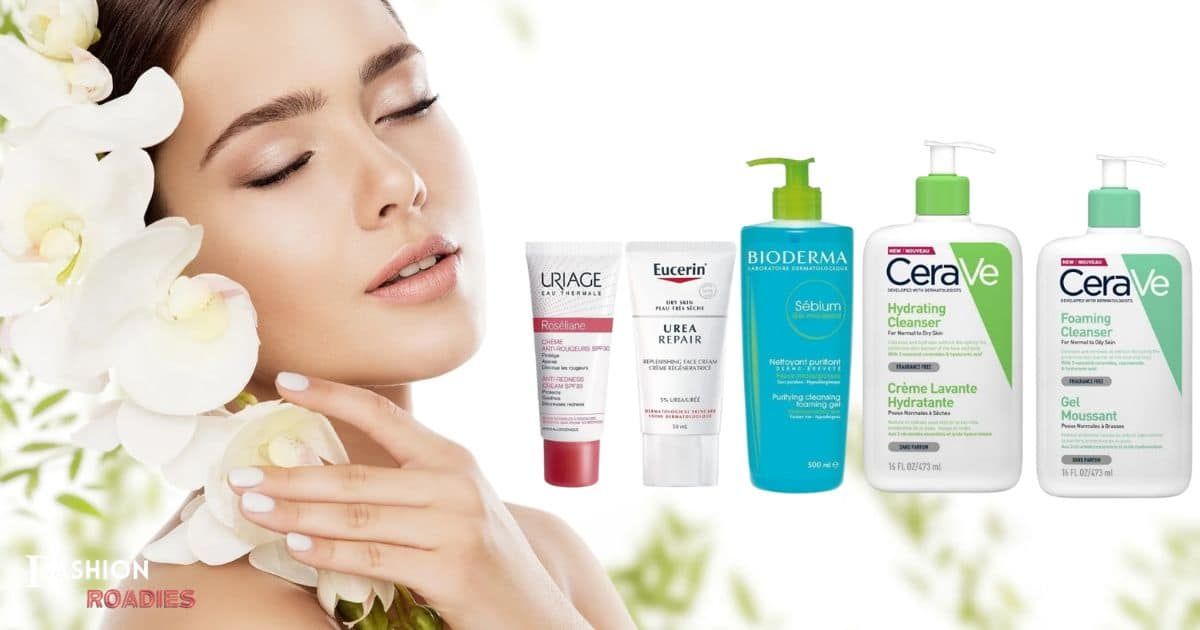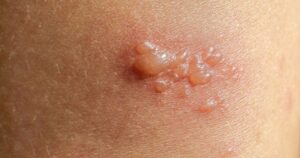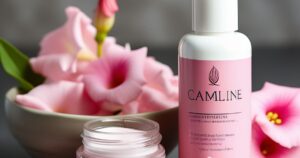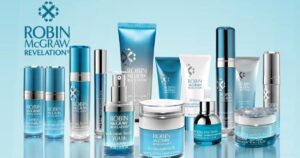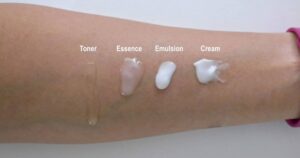In the realm of personal care, maintaining healthy skin is an endeavor that many individuals seek to embark upon. Akin to tending to a delicate garden, the cultivation of optimal skin health requires careful attention and appropriate products tailored to individual needs. This article aims to provide guidance in navigating the vast array of available skin care products by elucidating the basics of a skin care routine, elucidating different steps involved, and offering insight into selecting suitable facial cleansers, non-comedogenic products, toners, moisturizers, and sunscreen formulas. By undertaking such a comprehensive exploration of these essential components, readers will gain valuable knowledge necessary for achieving radiant and well-nourished skin.
Key Takeaways
- A basic skin care routine should include cleansing, moisturizing, and sun protection.
- Different skin care steps include cleansing, exfoliation, toning, moisturizing, and sunscreen.
- Choose a facial cleanser based on your skin type and concerns.
- Non-comedogenic products are recommended to prevent pore blockage, but it is important to check the ingredient list and consult a dermatologist for suitable options.
The Basics of a Skin Care Routine
The basics of a skin care routine encompass cleansing, moisturizing, and protecting the skin from UV radiation. Cleansing involves removing dirt, oil, and impurities from the skin’s surface to prevent clogged pores and breakouts. It is important to choose a gentle cleanser that suits your skin type. Moisturizing is essential for maintaining hydrated and healthy skin. A good moisturizer helps to lock in moisture, prevent dryness, and improve the skin’s texture. It is recommended to opt for a moisturizer with SPF to provide additional protection against sun damage. Protecting the skin from harmful UV radiation is crucial in preventing premature aging and reducing the risk of developing skin cancer. This can be achieved by using sunscreen with broad-spectrum protection and an appropriate SPF level for your needs.
Understanding Different Skin Care Steps
One important aspect to consider when developing a skincare routine is comprehending the various steps involved in maintaining healthy skin. These steps are crucial for achieving optimal skin health and addressing specific concerns. The first step is cleansing, which involves removing dirt, oil, and impurities from the skin. This can be done with a gentle cleanser suitable for your skin type. The second step is exfoliation, which helps remove dead skin cells and promotes cell turnover. This can be achieved through physical or chemical exfoliants. Next comes toning, which balances the pH level of the skin and prepares it for further treatment. Moisturizing is another important step that helps hydrate the skin and maintain its moisture barrier. Finally, applying sunscreen is essential to protect the skin from harmful UV rays. Understanding these steps will allow you to develop an effective skincare routine tailored to your specific needs and goals while promoting overall skin health.
WORD COUNT: 124 words
Choosing the Right Facial Cleanser
Cleansers play a vital role in the skincare routine by removing impurities and preparing the skin for further treatment. Choosing the right facial cleanser is essential to ensure effective cleansing without causing any damage or irritation to the skin. There are various types of cleansers available, such as foaming cleansers, gel cleansers, cream cleansers, and oil-based cleansers. Foaming cleansers are suitable for oily or acne-prone skin as they help remove excess oil and unclog pores. Gel cleansers are gentle and work well for normal to combination skin types. Cream cleansers are moisturizing and best suited for dry or sensitive skin. Oil-based cleansers effectively remove makeup and can be used as part of double-cleansing routine. It is important to consider your specific skin type and concerns when selecting a facial cleanser to achieve optimal results in your skincare routine.
Decoding Non-Comedogenic Products
Decoding non-comedogenic products requires an understanding of their ingredients and their potential to clog pores. Non-comedogenic products are specifically formulated to not block or clog the pores, which can help prevent acne breakouts. These products typically contain ingredients that have a low likelihood of causing pore blockage, such as certain oils and occlusive agents. It is important to note that the term “non-comedogenic” is not regulated or standardized by the FDA, so there is no guarantee that a product labeled as such will not cause any issues for everyone. However, it can still be a useful indicator when choosing skincare products, especially for individuals with acne-prone skin. To ensure that a product is truly non-comedogenic, it is recommended to check the ingredient list for potential pore-clogging substances like mineral oil or fragrances. Additionally, consulting with a dermatologist may provide valuable insights on suitable non-comedogenic options based on individual needs and concerns.
Proper Techniques for Washing Your Face
To effectively cleanse the face, it is recommended to start by wetting the skin with lukewarm water. This step helps to open up the pores and prepare the skin for cleansing. Next, apply a gentle cleanser that is suitable for your skin type. Massage the cleanser onto the skin using circular motions, paying special attention to areas prone to oiliness or breakouts. Rinse off the cleanser thoroughly with lukewarm water, ensuring no residue is left behind. Pat dry your face with a clean towel, avoiding any harsh rubbing that could irritate the skin. It is important to follow this routine twice daily – once in the morning and once before bed – in order to maintain clean and healthy-looking skin. By adhering to these proper techniques for washing your face, you can effectively remove dirt, oil, and impurities while promoting a balanced complexion.
The Importance of Using Toner
After properly washing your face, it is important to use a toner as part of your skin care routine. Toner is a liquid product that helps balance the pH levels of your skin and remove any remaining impurities. Using toner offers several benefits:
- Tightens pores: Toner helps to minimize the appearance of pores, making your skin look smoother.
- Restores pH balance: Toner restores the natural pH level of your skin, which can be disrupted by cleansing products.
- Hydrates and refreshes: Some toners contain ingredients like hyaluronic acid or rose water that provide hydration and leave your skin feeling refreshed.
- Preps for other products: Applying toner before serums or moisturizers helps these products penetrate deeper into the skin for better efficacy.
- Calms and soothes: Many toners contain soothing ingredients like chamomile or green tea extract that can calm irritated skin.
Once you have incorporated toner into your skin care routine, you are ready to explore moisturizers and sunscreen formulas.
Transitioning from using a toner in our skin care routine, let’s now delve into exploring different types of moisturizers and sunscreen formulas.
Exploring Moisturizers and Sunscreen Formulas
Moisturizers and sunscreen formulas vary in their ingredients, texture, and level of sun protection. Moisturizers are designed to hydrate the skin by replenishing moisture loss and improving the skin barrier function. They typically contain humectants, emollients, and occlusives that work together to lock in moisture. Sunscreen formulas, on the other hand, aim to protect the skin from harmful ultraviolet (UV) rays. They include active ingredients such as zinc oxide or titanium dioxide that act as physical barriers against UV radiation or chemical filters that absorb UV rays. The texture of moisturizers can range from lightweight lotions to heavy creams depending on individual preferences and skin type. Similarly, sunscreen formulas come in various textures like lotions, creams, gels, or sprays for ease of application. It is important to choose a moisturizer and sunscreen formula with appropriate ingredients and sun protection factor (SPF) based on one’s specific needs and skin concerns.
Conclusion
In conclusion, establishing a comprehensive skin care routine is crucial for maintaining healthy and radiant skin. By understanding the different steps involved in skin care, selecting appropriate products like non-comedogenic cleansers, and implementing proper techniques such as using toner, one can optimize their skin care regimen. Exploring various moisturizers and sunscreen formulas further enhances the protective barrier of the skin. Remember, a diligent and disciplined approach to skin care will yield astonishing results that will leave your complexion with an enchanting glow.

